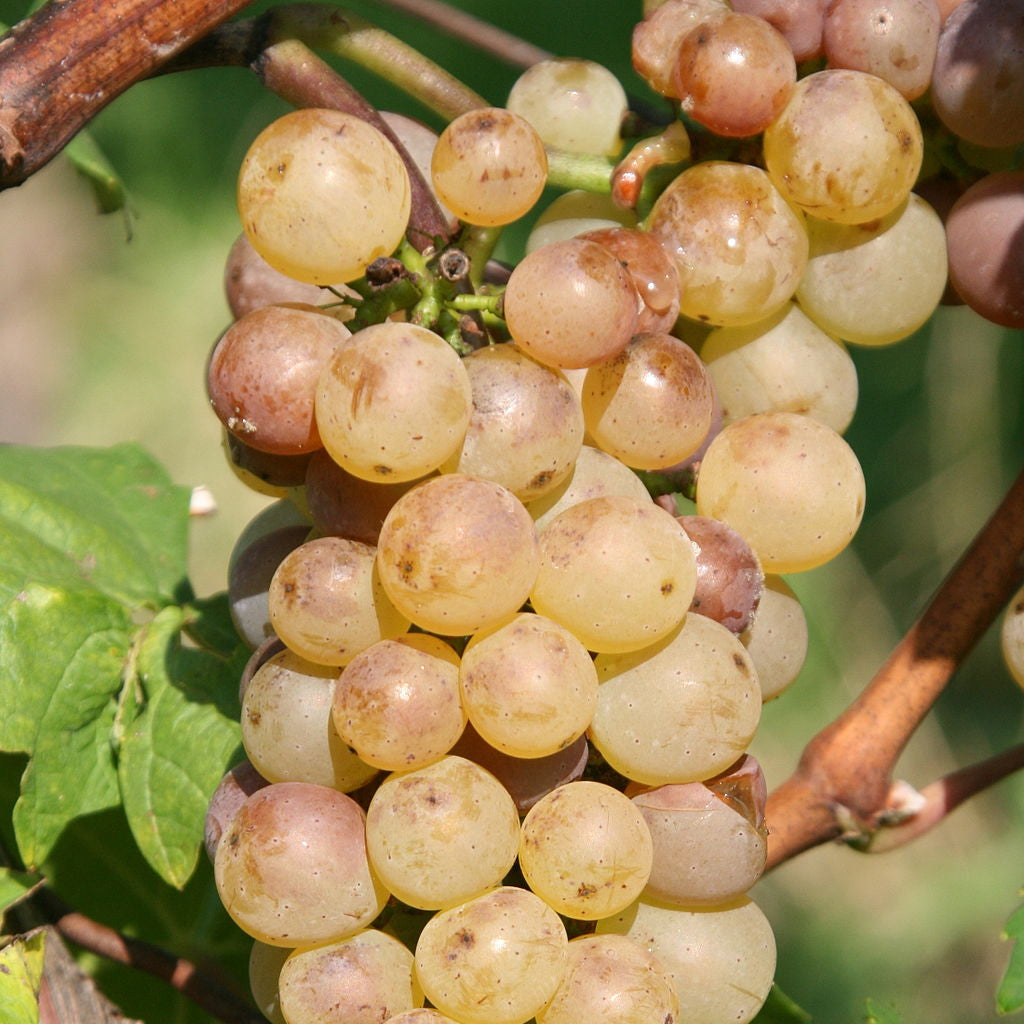General information
Auxerrois is a member of the Burgundy family and originated from a cross between Pinot Noir and Gouais Blanc. The variety likely originates from the Middle Ages, with roots in Burgundy. The name derives from the French county of Auxerre. The main growing area is France (approximately 1,600 hectares), but the grape is also increasingly being planted in Luxembourg (190 hectares) and Germany (180 hectares). Auxerrois combines cultural and historical value with excellent growing characteristics.
Grape
The grape bunches are medium-sized, slightly shouldered, and have a loose texture. The berries are medium-sized, round to oval, and have a yellow-green skin that turns brown when fully ripe. Growth is average, with often more shoots at the base of the plant.
Wine
Auxerrois wines are soft and round in structure, full-bodied, and rich in bouquet. They retain a good body even at lower alcohol levels. Typical aromas include quince, melon, mirabelle plum, and a light spiciness. Auxerrois is very well suited to dry vinification.
Cultivation advice
Auxerrois is very similar to White Burgundy in its cultivation requirements. Due to its thin skin and early ripening, it's important to harvest promptly to prevent rot.
Preparing the vine
Soak your vine in a bucket of water for 24 hours. This allows it to soak up some water before planting.
Ground preparation
- On calcareous soil: improve with lava grit
- On sandy soil: improve with bentonite and lava flour
Planting out
Using a soil auger or spade, dig a planting hole 10 cm in diameter and approximately 30 cm deep. Insert the graft just above the ground, so that the vine protrudes 5 to 10 cm above the ground. Plant your vines between May 1st and 15th.
Planting distance
- In line: 1 meter
- Between rows: 1.5 to 1.8 meters





